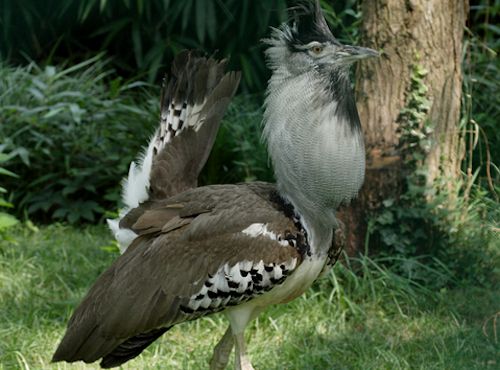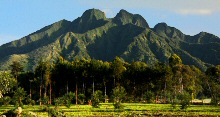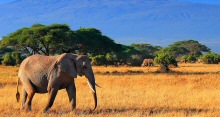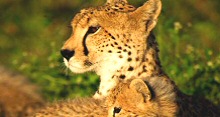 Heaviest-bird-Africa, The Kori Bustard is the heaviest flying-bird, and when fully grown, it may weigh as much as 19 kilograms. This is grouped among the land species. It has long feet each with three fingers having a grey / light brown plunge, and a characteristic long neck.
Heaviest-bird-Africa, The Kori Bustard is the heaviest flying-bird, and when fully grown, it may weigh as much as 19 kilograms. This is grouped among the land species. It has long feet each with three fingers having a grey / light brown plunge, and a characteristic long neck.
They have a crown on their heads which whose side extends into a black colored crest. Above each eye is a white stripe, whereas the chin, neck as well as the throat are creamy-white and blended with black stripes. The tail comprises of white and gray-brownish wide bands just as the flight feathers. It is a very unique and beautiful bird.
Diet, What the Kori Bustard Feeds on
This is the heaviest bird on the entire African continent. The Kori Bustard is an omnivore, and eats plants including berries as well as small animals including snakes plus lizards. The Kori chicks usually eat insects and these they supplement with some insects. Another interesting thing about these birds is that they eat gum from Acacia trees as well.
Something else interesting about these birds is that they drink in a sucking motion, which is not common with other birds which scoop water using their bills.
Breeding among the Kori Bustards
Interestingly the Kori Bustards are a polygynous species. Before mating, the male will blow up its neck and route its wings while it dances in front of the female. a couple of the males actually go ahead and act or even ruffle their feathers, looking as a beautiful white ball. Others may go ahead and bow as they head to the female as they inflate their bill. Another familiar habit is that the males have a tendency of pitch a nice sound all in the pre-mating game. By the time it gets to this, the female would have noticed the male.
The males that are going to breed usually show their pre-mating act either at the start of the day in the early morning, or late in the afternoon. When it comes to raising their young, the males do not participate in this at all. On the other hand, the females stay in their nest for a long time and only leave for a very short time just to get something to eat.
Normally, reproduction happens one time a year taking between 23 and 30 days. as the female begins laying eggs, several times it has been observed that they don’t make thick nests and occasionally may lay their eggs down of the ground.
The Behavior of the Kori Bustard
They mainly live on the ground ‘thus’ the name ‘bustard’, which implies a bird that walks. They hardly fly and only do so when there is need especially due to their weight. The Kori bustards generally have a extended life span and they are generally slow breeders. They usually remain within the same region provided that food is available and once it’s depleted they migrate to other areas.
They walk slowly with calculated strides and reluctantly fly. During courtship, the males blow up their throats and spread the feathers of their frontal neck outwards, they draw back their head and raised crest, droop their wings and deflect their tails upwards. They walk majestically and normally prefer walking away from danger but will only fly if they are under pressure. if they are in a group, these birds move in a wobbly line as they look for what to eat.
Habitat of the Kori Bustard
These unique birds live in vast, open grassland areas that are sparsely forested savanna. Kori Bustards prefer areas having short grass as well as a beautiful scenery. The Kori subspecies may be seen within dry savanna areas with few trees. They hardly migrate but only do so in case of bird weather or search for food.
Best Place to see the Kori Bustard
These are best seen within the East African countries as well as in South Africa.
For more information about the Native African Birds, visit adventureugandasafari.com












